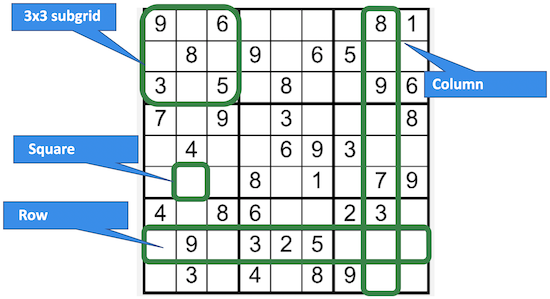


Maybe you erase and start over, or maybe you just give up.

#Strategies for solving sudoku how to#
If you’ve played you’ve definitely gotten to the dreaded point where you don’t know how to solve the puzzle. This math-based puzzle has taken the world by storm and the vast majority of people are thrilled about that. Basically anywhere someone might have some downtime there’s probably someone playing sudoku. People play it online, they play it in newspapers, and they play it while they’re bored on an airplane. He is the bestower of the modern name of sudoku, meaning "single numbers” in English.Sudoku has become a very ubiquitous game in our world. Maki Kaji of Japan then published the grid in Nikoli, his puzzle company’s magazine in 1984. American Howard Garns in 1979 invented sudoku as we know it, and published it originally as a puzzle in Dell Magazines with the name "Numbers in Place." Other tips for a sharp mind: Try these easy mind games to improve your brain function and help prevent disease Where does sudoku get its name?Ī brief history, as provided by the Cornell University mathematics department. More research is needed to definitively prove this conclusion, study authors clarify, but in the meantime, not a bad idea to keep up with your puzzling to sharpen cognitive skills! The study went so far as to say those who do puzzles like sudoku have brain function that is equal to 10 years younger than their actual age. Healthline reported in May of 2019 on a cross-sectional study showing participants who engaged in games like sudoku and crosswords performed better on subsequent tests. This puzzle, like any game of logic, is a workout for your brain. There is no real arithmetic operation happening, save for subtraction of the numbers already used from those possible for future use.Īn article from the Department of Mathematics at Cornell University explains, “one needs to use a combination of logic and trial-and-error.” More math is involved behind the scenes, for the puzzle masters designing different sudoku grids. Solving a sudoku puzzle actually relies more on logic than math. Each 3x3 quadrant should have numbers 1-9, no repeatsīonus rule: Mathematically this means the sum of each of these categories should be 45.Each column should have numbers 1-9, no repeats.Each row should have numbers 1-9, no repeats.Solve our online jigsaw puzzle: Play now. advises using the process of elimination, or deductive reasoning. The only hard and fast rule is not to repeat numbers. Outside of that, there is no straightforward "how to play" sudoku guide. The fewer numbers already filled in the more difficult it will be. Most sudoku puzzles come with a few of the boxes already filled in, so you can use those freebie clues as a jumping off point for solving and work backwards.
#Strategies for solving sudoku trial#
If you’re a beginner, a lot of sudoku puzzling is trial and error (so start with a pencil, not a pen.)

Sound like a jumble of words? Here is an example of solved sudoku as a visual aid. Every row, column and box must contain the numbers one through nine, no repeats. Sudoku is defined by Merriam-Webster as a 9-by-9 grid puzzle in which the grid is divided into 3-by-3 boxes. Play the crossword while you're at it: USA Today online crossword What is sudoku? How do you play sudoku? What are the rules? We unpack the puzzle for beginners below, and give a little context on brain benefits, and name origin. The small grid, found often next to a word scramble or comic strip in a print newspaper, demands focus and big picture thinking. Daily puzzlers would be quick to tell you that sudoku, Wordle’s mathematical cousin, is not as easy as it looks.


 0 kommentar(er)
0 kommentar(er)
